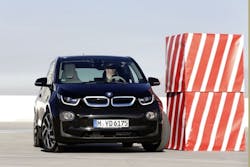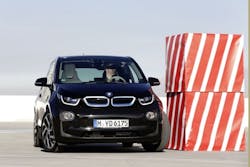Self-parking technology: it works, but drivers avoid it
Here’s a cursory warning flag where semi-autonomous and fully autonomous vehicles are concerned.
When it comes to the initial systems design to make driverless vehicles a reality – such as self-parking technology – while they definitely work well in the real world, drivers are avoiding their use.On top of that, not only are they avoiding the use of self-parking systems, according to a new survey from AAA, most say they don’t trust such technology – even though it often performs parking tasks far better than they can.
"Autonomous features, such as active park assist, are rapidly being introduced into new vehicles, yet American drivers are hesitant to let go of the wheel," noted John Nielsen, AAA's managing director of automotive engineering and repair, in a statement. "The vast majority of Americans say they would not trust self-parking technology.”
AAA’s poll found that nearly 80% of American drivers are confident in their parallel parking abilities, with only one-in-four saying they would trust self-parking technology to park their vehicle – even though AAA’s own testing found self-parking technology outperformed unassisted drivers in four key areas:
- Drivers using self-parking systems experienced 81% fewer curb strikes.
- Self-parking systems parallel parked the vehicle using 47% fewer maneuvers, with some systems completing the task in as little as one maneuver.
- Self-parking systems were able to park a vehicle 10% faster.
- Self-parking systems were able to park 37% closer to the curb.
It’s worthy to note that other surveys discerned that providing safer driving might be a tipping point where autonomous vehicle systems are concerned.
AAA noted that it tested self-parking technology on five vehicles: a 2015 Lincoln MKC, a 2015 Mercedes-Benz ML400 4Matic, a 2015 Cadillac CTS-V Sport, a 2015 BMW i3 and a 2015 Jeep Cherokee Limited.
While the tested self-parking systems performed well and parked quicker and more accurately than an unassisted driver, AAA did note this technology is not without flaws.
For example, Nielsen noted that some systems parked the vehicles exceedingly close to the curb, leaving wheels and tires vulnerable to scratches and costly repairs.
"AAA recommends that drivers leave six-to-eight inches between the vehicle and the curb when parallel parking, [but] some systems leave as little as a half-inch buffer,” he added.
Still, the upshot is the technology parks a car better than a human driver. But the humans avoid using it – even if it’s built into the vehicle as a standard feature.
Does this portend a slower-than-expected adoption rate for more advanced autonomous vehicle systems? Maybe. In any event, it’s a big hint that getting drivers to give up control of their vehicles will be a far from easy task.

